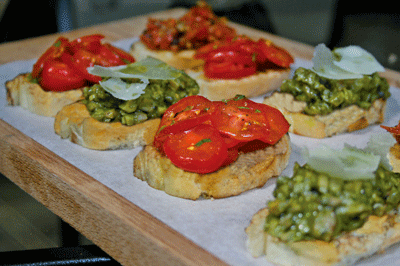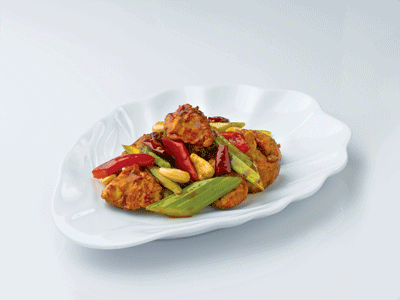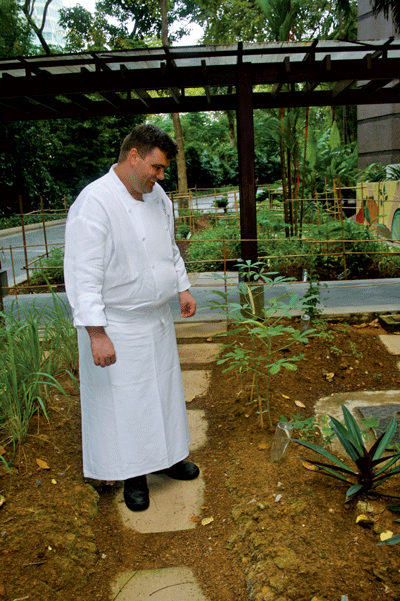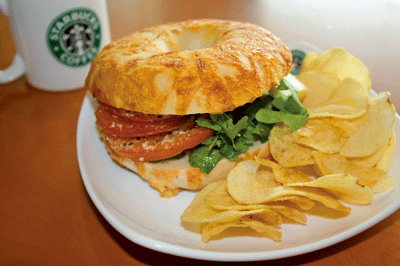Almost 20 years ago, I frequently travelled solo on a 34-hour journey from Manila to my college in Massachusetts. I found a clever trick to make the airline meal more varied: I pre-ordered Asian vegetarian food. It was tastier than the usual Economy Class options, plus I was often served before the other passengers.

Although my stint as a vegetarian was a short-lived whimsical experiment restricted to airlines, more and more people are embracing the vegetarian way of life. According to the Vegetarian Resource Group, three percent of the US population account for people who never eat meat, poultry or seafood and, out of that, one percent for vegans who, in addition, never eat dairy products, eggs or even honey.
The British Vegetarian Society reports that vegetarians also account for three percent of Britain’s population, while India wins hands down, with 31 percent of its population being vegetarian, most commonly Jains and Brahmins and, less frequently, Buddhists and Muslims.
The Jain religion forbids harming any forms of life and prohibits the consumption of any kinds of meat, egg, honey, onion, garlic, ginger and all root vegetables, which may harm soil-living insects when harvested.
India’s predominantly Hindu population promotes vegetarianism as an ideal. It is attuned to the principles of non-violence applied to animals and offering only pure vegetarian food to a deity and the belief that non-vegetarian food is detrimental to the mind and spiritual development.
To address the diverse needs behind meat-free diets, Singapore Airlines offers six different types of vegetarian meal: raw, oriental, Indian, Jain, western and vegan. Hermann Freidanck, the carrier’s inflight service food-and-beverage manager, says the airline serves the greatest number of vegetarian meals on its sectors serving Indian passengers. When Silicon Valley was at its peak, they also had many requests for Indian vegetarian meals on that route due to the many Indian IT workers travelling there.
The German chef says they use fresh vegetables and tofu, but carefully steer away from serving mock meat, as such processed alternatives often look like real meat and some vegetarian passengers refuse to eat them.
While there may be no exact figures to track vegetarian trends in Asia, a shift is happening here as well. Vegetarian Society of Singapore president Dr George Jacobs has been a vegetarian since 1980 and a resident of Singapore since 1993. He says: “What strikes me is that, in the 1990s, when people in Asia learned I was a vegetarian, their usual question was, ‘Are you a Buddhist or a Hindu?’ In the 2000s, the question expanded to, ‘Is it for religion or for health?’
“In the current decade, public awareness has expanded even further. I don’t get blank stares when I talk about the environment and fewer people roll their eyes when I talk about reducing the suffering of our fellow animals.”
Thanks in part to celebrities such as Ellen Degeneres and Alicia Silverstone, who have publicly embraced the vegan lifestyle, there is a growing awareness.
Lucky for Dr Jacobs, he lives in Singapore, one of the world’s most vegetarian-friendly places. The island’s multi-cultural mix of Chinese, Indian and Malay and its large expat population results in an equally diverse cuisine. Little India abounds with eateries serving an assortment of Indian breads, idlis, dosas, puris and thali (a set of different dishes).
There is also a plethora of Chinese vegetarian restaurants around the island serving wok-fried vegetables, as well as mock versions of suckling pig, roast duck and the classic Hainanese chicken rice. From hawkers to hotels, vegetarian options do not seem to run out.
Since vegetarians are spoilt for choice, I therefore opted to give it a test run. Why not go green for a week? This could be challenging for a food and travel writer who is always on the go.
Eating at home, menus are easily altered. But what happens when you remain a vegetarian at business meetings, on trips and when eating out with friends?
Researching online, I found the whole gamut, from western to Indian to Chinese and even Peranakan (Nonya) vegetarian options. But when meals become long conversations with friends or interviewees, I prefer a lovely setting to dine and talk. Sadly, most of the options were too casual or shabby, making them unsuitable for business meetings.
I then remembered Annalakshmi, a pay-as-you-wish restaurant run by a charitable organisation. Located in the basement of a mall in Chinatown, the restaurant is charming and quiet. There is an extensive buffet of North and South Indian vegetarian dishes on weekends.
During the rest of the week, the volunteers gladly whip up anything from dosas and tandoori breads with vegetable curries to thalis. I opted for a garlic naan bread with gobi (cauliflower) masala and washed it down with a mango lassi. An excellent rasamalai, a milk-based sweet with ground pistachio, and kulfi (Indian ice cream) crowned the meal.
For a working lunch, I chose Lingzhi, a vegetarian restaurant in Liat Tower, along Orchard Road. The restaurant prides itself on the “haute vegetarian cuisine” it serves, expertly using the woody overtones of mushrooms for flavouring rather than monosodium glutamate.
The restaurant was classy with superior service, its waiters frequently replenishing water goblets. It made a perfect setting for business meetings.
We particularly enjoyed the wok-fried monkey head mushrooms with dried chilli, made with a mushroom cultivated commercially on logs or sterilised sawdust. Achieving the same crispy exterior and juicy texture as chicken, it tasted exactly like kung pao chicken. This dish alone makes it worth returning to this restaurant. The succulent sweet and sour fish made of bean curd skin was also tasty.

Regina diBenedetto, a vegetarian for the past 20 years, invited me to lunch. We dined at Genesis, a vegetarian health-food restaurant close to the central business district in Raffles Place. This 34-year old American was a picky eater as a child. The mere sight of raw meat could ruin her appetite.
Moving to Singapore three years ago, she found being a vegetarian a breeze here compared to her stint in meat-loving Frankfurt. Travelling to Thailand and Vietnam poses a problem as most vegetable dishes are flavoured with fish sauce, a no-no for her.
At first, diBenedetto was too shy to tell her colleagues about her dietary concerns, but consequently had nothing to eat at business dinners. She is now up-front with everyone. By calling ahead of time and advising her dining companions of her dietary requirements, diBenedetto finds restaurants to be accommodating. Last Chinese New Year, a Japanese restaurant in Taiwan cleverly prepared a special vegetarian menu especially for her, as she celebrated the holiday with her meat-eating friends.
This bank executive dines at Genesis at least twice a month. The restaurant promotes the healing power of vegetarian food with health seminars, nutritional counselling and cooking classes, and by selling organic products.
I was intrigued by the therapeutic rice set, described as a low fat, unrefined meal that literally clears up your arteries and controls or reverses diabetes, hypertension and other degenerative diseases. But, instead, I opted for Regina’s favourite, olive rice with a side dish of steamed dumplings.
Being vegetarian doesn’t necessarily mean being healthy, unless it is accompanied by a health-conscious way of life. For example, diBenedetto gained 20 kilos while living in Mexico as she indulged in starches, empanadas, rice and beans and yucca.
She points out that there are many overweight vegetarians in India, perhaps due to the wide use of ghee (clarified butter). She now limits her sugar intake.
Luxury hotels pride themselves in providing superior food and services. Catering to the specialised needs of its guests, the Four Seasons maintains a global standard in all its properties, including having at least two vegetarian dishes on its menus. Stefano Andreoli, the sous chef at One-Ninety of the Four Seasons Singapore, says the Malaysian style vegetable curry served with biryani rice and papadum and assorted bruschettas are standards he cannot remove from the menu.

Vegetarians are spoilt for choice, with a dizzying array of possibilities in the restaurant’s famous buffet, from a variety of salads to risotto with black truffles and freshly
made gnocchi.
The Italian chef tells me they can make special dishes to suit their guests’ requests. A Mauritian guest was extremely pleased when chef Stefano whipped up an authentic vegetarian Mauritius-style curry for her.
He emphasises that it is all about getting the freshest and best ingredients. They are working towards only using organic vegetables and free-range chicken in their restaurants. Just last year, the Four Seasons even started its own organic vegetable garden. It is refreshing to see lemongrass, chilli, chives, tarragon, coriander, basil, beetroot, banana, papaya and avocado all growing right along the Orchard Road lot.
Dr Jacobs agrees that hotel restaurants often have vegetarian options. But diBenedetto wishes that more hotels would be inspired by Shibaken, a Japanese-French restaurant in the Gallery Hotel in Singapore, which goes completely meat-free two days a week, on Mondays and Tuesdays.
With head deeply bowed, I humbly confess to my failure to be meat-free for an entire week.
Being a vegetarian is a lifestyle that requires many mindful choices and careful planning. If I had researched more, I would have found vegetarian alternatives in Malacca, instead of succumbing to the chicken rice balls. If I had brought snacks with me, the roasted pork belly wouldn’t have tempted me. But vegetarian alternatives are also accessible.
Almost every hawker centre serves yong taufoo, a Chinese soup with Hakka origins that’s found in Malaysia and Singapore. An assortment of ingredients such as mushrooms, bitter gourd, eggplants and chilli are stuffed with bean curd and served with noodles or steamed rice.
Even Starbucks cafes have the most aromatic roasted tomato and mozzarella sandwiches with wild rocket. The combination of these three ingredients makes for a simple yet satisfying lunch on the go.

While I do appreciate the benefits of becoming a green eater, I am not compelled to become a full-fledged vegetarian. Instead, I will continue to fulfil a commitment I began in January: meatless Mondays.
One day a week, I stay away from meat. Films such as Food Inc and books such as Michael Pollan’s The Omnivore’s Dilemma, which traces the origins of food until it gets to our tables, raised my awareness about the effect of our food habits on the environment.
Eating veggie food reduces the personal impact on the environment by helping decrease gas emissions (livestock farming produces greenhouse gases which contribute to climate change), saving water (it takes more water to produce a kilo of beef than it does to grow a kilo of vegetables or grain) and saving land (a meat-eating diet in the UK requires more than twice the land that a veggie-eating diet does).
Going green is a lifestyle change. It is a process that requires many choices to be made. There will be sacrifices on the way but also rewards and pleasures.
The first step is to become more mindful of our eating habits and their effects. Only then can we make a commitment, even if it only means going green for a meal, a day or a week.
TIPS FOR GREEN TRAVELLERS
Before going on a trip, check out www.happycow.com and www.vegdining.com. They list vegetarian eateries worldwide.
For iPhone users, there’s VegOut. This phone application provides a worldwide directory of the vegan, vegetarian and veg-friendly restaurants nearest to your current or programmed location.
Ask someone to write down in the local language what your food preferences are. Show that card to eateries, so they can serve you food that suits your diet.
Learn how to cook vegetarian. In the UK, the Cordon Vert School offers professional diplomas and one-day workshops on vegetarian cooking. In California, there’s Living Light, a raw food vegan culinary school. In New York, there’s the Natural Gourmet Institute for Food & Health. Search online for a cooking school around your area, which can teach you how to whip up vegetarian dishes.
Always have healthy snacks such as nuts, pistachios, whole-grain crackers or dark chocolate on hand when you are hungry or crave something sweet.
WHERE TO FIND
Whether you opt to go totally green, or go meatless one day of the week (as the city of Ghent in Belgium does Meatless Thursdays), here are some vegetarian recommendations around the region.
SINGAPORE
Annalakshmi
tel 65 6339 9993
Lingzhi Vegetarian Restaurant
tel 65 6734 3788
Genesis Vegetarian Health Food Restaurant
tel 65 64387118
www.genesishealthfood.blogspot.com
Starbucks Coffee
One-Ninety at the Four Seasons Hotel Singapore
tel 65 67341110
SYDNEY
Govinda’s
tel 612 93805155
MANILA
Greens Cafe
tel 632 415 4796
SHANGHAI
Gong De Lin
tel 86 216 327 0218
THAILAND
May Kaidee Vegetarian Restaurant
tel 662 281 7699
KOREA
Sanchon Korean Temple Cooking
tel 822 735 0312
JAPAN
Nataraj
tel 813 5537 1515
HONG KONG
Tung Fong Siu Kee Yuen
tel 852 2507 4839 or
tel 852 2575 2542








